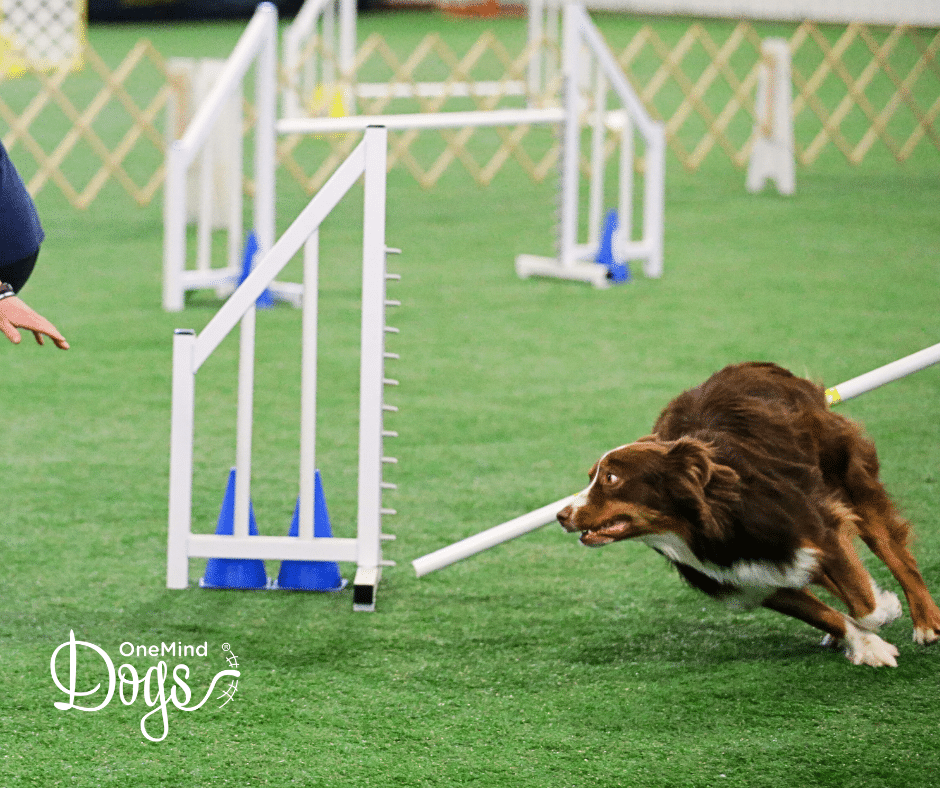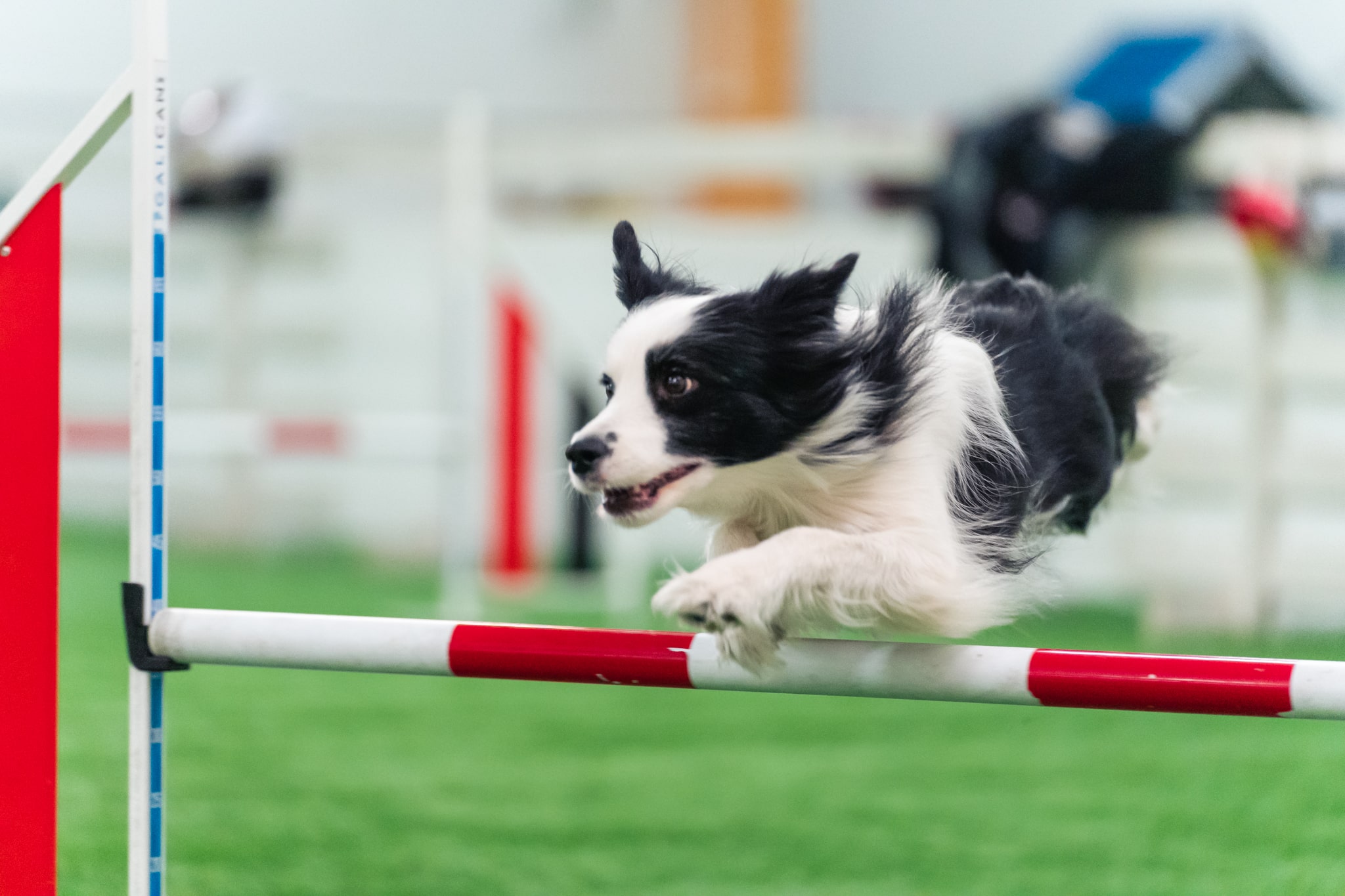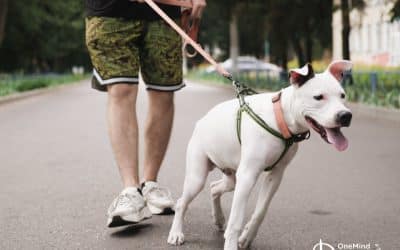Are you interested in dog agility? Dogs are remarkable animals with impressive physical abilities. If you’ve ever seen a dog leap over a fallen log or race through a field, you’ve witnessed their natural agility. Historically, humans have relied on these traits for hunting, herding, and companionship. Today, we channel this athleticism into the exciting world of dog agility. Curious about what makes dog agility so popular? You’re in the right place! This article will guide you through everything you need to know to get started with dog agility training.
The basics of dog agility
The first thing to know about dog agility is that it is indeed a sport. That being said, there’s no reason you can’t enjoy the game for what it is, without the competitive aspect, but we’ll get to that later. Let’s start with the basics.
Dog agility is a two-person team sport – well, one person and one dog, to be precise. And once you experience that feeling, you’ll want to do it again and again!
Your job will be that of the handler: to guide your partner through an ever-changing course filled with obstacles of varying difficulty. The courses are designed to test both the handler’s ability to direct their dog and the dog’s athleticism and willingness to follow instructions. When racing through the course, the dog-handler team is aiming for speed, fluidity and accuracy.
At each competition or “trial,” the handler and dog tackle a unique course set up just for that run. So the team can’t practice the exact sequence or rely on memory from last week’s course. Instead, you have to guide your dog through this course using only your body language and sometimes your voice —no touching the dog, no touching the obstacles.
What does an agility course look like?
Agility courses typically have 14-20 obstacles along their path. The overall course length is approximately 140-200 meters. Dogs can reach speeds of more than seven meters per second while navigating them! Judges meticulously strive to design a smooth and flowing course that allows dogs and handlers to showcase their skills in a safe, fun and fast manner.
Obstacles that may show up along the way include:
- Tunnels
- Wing jumps
- Weave poles
- Tire jumps
- Teeter totters
- A-frames
- Dog walks
- And more
How is a trial judged?
Now that you know the basic layout of an agility course, let’s discuss how runs are officiated and scored.
Dogs are generally divided into different competition levels and divisions based on their size and past trial experience. There are different classes available varying from jumpers to standard and even games! Several major organizations coordinate and judge agility trials, each with its own specific rules and regulations.
During a run, dogs can incur “faults”—that is, point deductions—for things like knocking down jump bars, missing weave pole entries, failing to place a foot on an obstacle’s “contact zone,” or refusing an obstacle, much like show jumping competitions in the equestrian world. Disqualifications can also occur, for example if an obstacle is take out of sequence.

Which dogs can compete in agility?
There is no discrimination here—any physically fit, healthy dog can participate in agility! However, certain high-energy breeds with natural athleticism tend to excel in the sport. These include Border Collies, Kelpies, Shetland Sheepdogs, Working Cocker Spaniels and Parson Russell Terriers.
Most competitions require dogs to be at least 18 months old to participate. However, training begins much sooner. Even puppies can begin the foundation steps of agility training! If you think agility might be a great fit for your dog, grab our free Ultimate Agility Starter Kit and find out how to get started.
Which humans can compete in agility?
Just like there are no restrictions on dog breeds, there are also no strict age or gender limitations for handlers either. Many agility clubs offer junior classes to encourage children to participate, and some organizations have participants well into their seventies! Contrary to popular belief, you don’t need to run as fast as your dog to be successful in agility.
Many people get discouraged because they assume agility handlers must be Olympic-level athletes. But in reality, speed and coordination matter far less than communication skills. Proper handling is more about using your body language effectively than running fast.
It’s never too early or too late to get involved! The most vital thing is having a great relationship with your dog and enjoying learning together.
What are the benefits of participating in agility?
Beyond being plain fun, agility provides many physical and mental benefits for both dogs and their human counterparts.
It builds confidence, body awareness, coordination, and overall fitness in dogs. The changing obstacles, challenges and environments also provide mental stimulation to keep them engaged.
As for handlers, agility provides a great workout that improves strength, balance, reflexes, and cardio endurance. The teamwork and communication skills developed also help strengthen the overall human-animal bond. As an added benefit, the memorisation of courses is perfect for keeping your mind sharp!
Additionally, getting involved in agility trials provides opportunities for positive socialization. Both handlers and their dogs can make new friends that share their interests! The agility community is an inclusive and generally very welcoming one. Spending time with like-minded individuals with a passion for dogs can become addictive mind you, you may be swapping drinks with friends to waking up early and driving a few hours to run around a field with your dog every weekend!

Training for dog agility
As with any sport, solid fundamentals and technique are critical for excelling in agility competitions. But it’s not about winning— proper education also helps prevent frustration for dog and handler as well as injuries on course.
As such, the first step is proper warming up and stretching exercises. Yes, even dogs need to warm up. Then comes the real challenge: figuring out how to communicate with your dog using primarily your body language. Dogs naturally follow human body language, it’s their native tongue so to speak. Learning handling techniques based on this instinctive understanding will help you make the course easy for your dog to follow.
Before attempting any maneuvers, dogs should be taught a strong foundation of basic skills and independent obstacle performance. Gradually introducing equipment pieces and completing mini obstacle sequences helps handlers learn how to guide their dog smoothly and efficiently around courses. And yes, you can learn all of these things online (just check out this personal experience from an online student!), at a club, with a private trainer or at combination of different venues.
Patience and consistency are vital. But so is keeping training fun and rewarding to keep dogs engaged in the process.
The OneMind Dogs Training Philosophy
Instead of relying on trial and error, we created OneMind Dogs. Our method is about positive reinforcement and building a solid connection with your dog. The OneMind philosophy is also about seeing the world through your dog’s eyes.
We teach force-free, positive reinforcement-based techniques. Building a mutually respectful relationship is the core of our training programs. Understanding why dogs behave in specific ways allows handlers to better communicate and motivate them. This leads to more effective cueing and a beautifully synchronized agility team!
OneMind Dogs offers online courses so everyone can access our training methods. In the OneMind Dogs method, the handler directs the dog to the correct running lines using the right body language. The dog follows seven essential elements:
- Handler’s movement
- Position
- Eyes
- Chest
- Feet
- Arms
- Vocal commands
We turn combinations of these elements into Handling Techniques, which are like tools in your agility toolbox. The more tools you have, the easier it is to “solve” a course.
Once you learn to “speak dog” by understanding how they naturally react to these elements, incredible things can be achieved together. It becomes possible to smoothly and quickly complete a course with you and your dog in a perfect state of “OneMind.”
Sign up today to get started.
With OneMind Dogs, you don’t need to wait for the next local class or drive hours to a training center. You can start right now, right where you are! No need to look up “Dog agility training near me”, we’ve got you covered! Our online courses are designed to fit into your busy life. And new lessons are released regularly to build skills progressively at your own pace.
Sign up today to transform your relationship with your dog.
FAQs
When was dog agility invented?
Dog agility traces its origins as an organized, competitive sport to the late 1970s in England. The first major public demonstration took place at the prestigious Crufts Dog Show in 1978, helping showcase it to the world.
Is dog agility expensive to get into?
Many assume specialized equipment and training are required, but you can start at home with everyday household items! As you progress, investing in regulation obstacles can be helpful but is not strictly necessary. Building essential foundational skills does not require a huge budget. Agility can be done as cheaply (or extravagantly) as you choose.
Is agility training only for competitions?
While some handlers strive to compete with their dogs, training agility skills has many benefits beyond trials. The mental and physical stimulation provides excellent supplemental exercise for energetic pups. The extra bonding time and learning new cues also improve any dog’s focus and relationship with their owner.
How can I tell if my dog enjoys agility?
Every dog has a unique personality, but signs that yours is having fun in agility can include signs of excitement from your dog (wagging tail, bounciness, wiggly body, receptiveness to rewards), focused attention on you, and eagerness to complete the course. It is still essential to monitor for signs of fear, anxiety, or injury and adjust your approach accordingly, though. Keep sessions short and sweet for introductory training.
Dog Agility is a fun and addictive sport for all dogs and handlers, give it a try, you won’t regret it!



